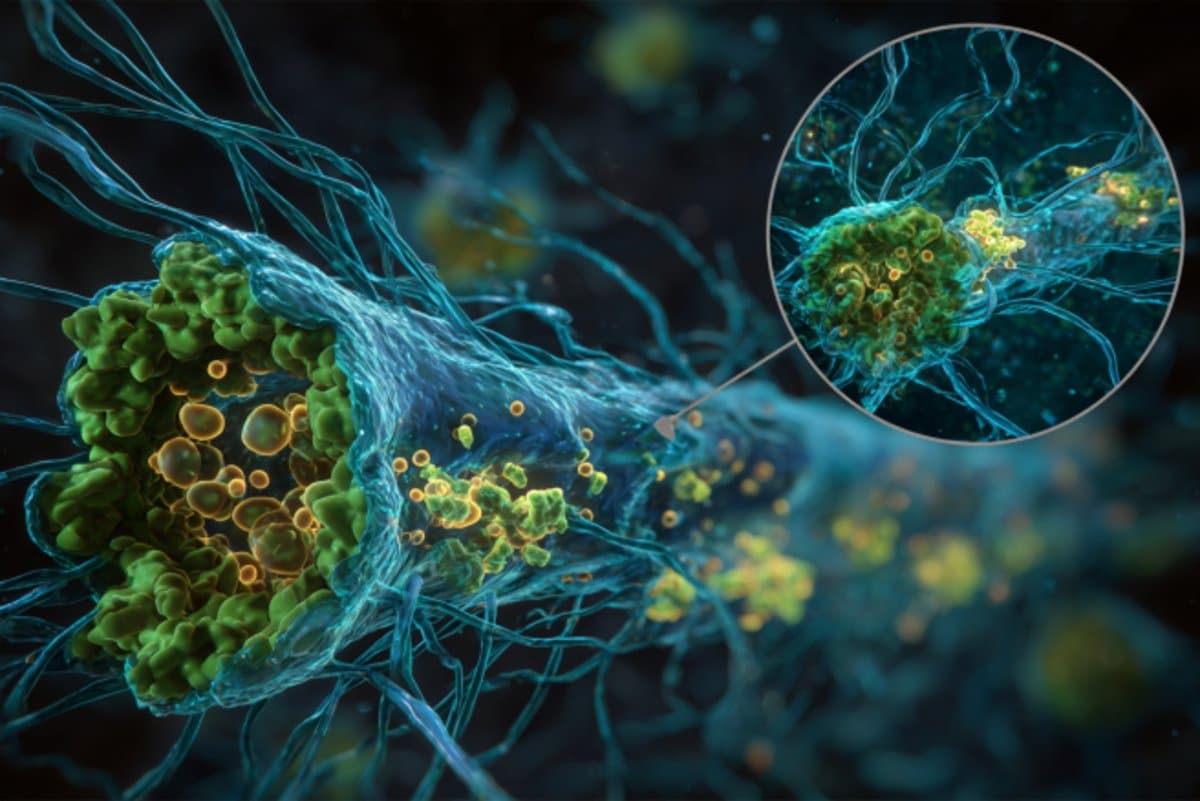Summary: A new study uncovers the long-elusive mechanism of inhalational anesthetics by identifying the RyR1 calcium channel as a key molecular target. Researchers demonstrated that anesthetics like isoflurane activate RyR1 to trigger calcium release from the endoplasmic reticulum, a crucial step in inducing general anesthesia.
Genetically engineered mice with altered RyR1 showed reduced sensitivity to anesthesia, confirming the channel’s central role. These findings offer a new path for developing safer anesthetics and treatments for anesthesia-related complications.
Key Facts:
- RyR1 Role Confirmed: RyR1, a calcium release channel, is directly activated by inhalational anesthetics like isoflurane.
- Genetic Evidence: Knock-in mice with RyR1 mutations showed decreased anesthetic sensitivity, confirming its function.
- Therapeutic Potential: New compounds targeting RyR1’s anesthetic binding site produced sedative effects, hinting at future drug development.
Source: Japan Science and Technology Agency
Since their anesthetic effects were discovered approximately 180 years ago, inhalational anesthetics have been used for general anesthesia in surgical operations. However, the mechanism of their anesthetic has not been fully revealed yet.
Previous studies have shown that inhalational anesthetics exert their anesthetic effects by acting on multiple proteins, but the presence of unknown target molecules has also been suggested.

In rare cases, patients with abnormal type 1 ryanodine receptors (RyR1) (RyR1 mutations) have been known to be at higher risk of malignant hyperthermia*1, which can be caused by inhalational anesthetics.
However, the direct molecular interaction between inhalational anesthetics and RyR1 has not been clearly demonstrated, and the relationship between RyR1 and anesthetic effects has also been unknown.
In the present study, a research group led by Professor Hiroki Ueda of the Graduate School of Medicine, The University of Tokyo, found that RyR1 which is a calcium release channel, induces general anesthesia by serving as a target molecule of inhalational anesthetics.
The research group first confirmed that isoflurane and other inhalational anesthetics activate RyR1 and stimulate calcium release from the endoplasmic reticulum*2.
The amino acid residues in RyR1 which play an important role in the isoflurane-induced activation were identified, and the binding site of isoflurane was estimated.
Additionally, the research group created a genetically modified mouse (knock-in mouse*3) which expressed the RyR1 mutant that does not respond to isoflurane.
When the knock-in mice were exposed to isoflurane, they demonstrated a partially reduced sensitivity to anesthesia compared to normal mice.
Furthermore, new compounds that target the putative binding site of isoflurane were identified from in silico compound screening and were found to have sedative-like effects in mice.
These results suggest that RyR1 is a functional target of isoflurane that is directly related to its anesthetic properties.
This research reveals one aspect of the molecular mechanism of inhalational anesthetics used for general anesthesia.
This is a new finding as previous studies have not demonstrated the relationship between RyR1 and anesthetic effects in mammals. A more detailed understanding of anesthetics’ mechanism of action could lead to the development of better anesthetics and treatment methods.
The results of this study were published in the online version of the American scientific journal PLOS Biology on June 3, 2025 (EDT).
This result was achieved in the Ueda Biological Timing Project, a research area of the Exploratory Research for Advanced Technology (ERATO) by the Japan Science and Technology Agency (JST).
Under this project, JST pursues “systems biology for understanding humans” using the sleep-wake rhythm as a model system and aims to understand information on “biological time,” which transcends from molecules to individual humans living in society.
Notes:
(*1) Malignant hyperthermia: Life-threatening elevation in body temperature that occurs during general anesthesia. It occurs in patients with genetic predisposition (frequently RyR1 mutation) when they are administered inhalational anesthetics. Dantrolene, an inhibitor of ryanodine receptors, is used as the therapeutic agent.
(*2) Endoplasmic reticulum: A structure inside the cells that is enveloped by biological membrane and is one of the cellular organelles. It also functions as a storage of intracellular calcium. By being stored in the endoplasmic reticulum, intracellular calcium is normally maintained at a low concentration.
(*3) Knock-in mouse: A genetically modified mouse with specific genetic sequences introduced in its genome. This study used a knock-in mouse that was modified in certain genetic regions coding RyR1.
About this neurology research news
Author: Satomi Kobayashi
Source: Japan Science and Technology Agency
Contact: Satomi Kobayashi – Japan Science and Technology Agency
Image: The image is credited to Neuroscience News
Original Research: Open access.
“Isoflurane activates the type 1 ryanodine receptor to induce anesthesia in mice” by Hiroki R. Ueda et al. PLOS Biology
Abstract
Isoflurane activates the type 1 ryanodine receptor to induce anesthesia in mice
Inhaled anesthetics were first introduced into clinical use in the 1840s.
Molecular and transgenic animal studies indicate that inhaled anesthetics act through several ion channels, including γ-aminobutyric acid type A receptors (GABAARs) and two-pore domain K+ (K2P) channels, but other targets may mediate anesthetic effects.
Mutations in the type 1 ryanodine receptor (RyR1), which is a calcium release channel on the endoplasmic reticulum membrane, are relevant to malignant hyperthermia, a condition that can be induced by inhaled anesthetics.
However, it was previously uncertain whether inhaled anesthetics directly interact with RyR1.
In our study, we demonstrated that isoflurane and other inhaled anesthetics activate wild-type RyR1.
By employing systematic mutagenesis, we discovered that altering just one amino acid residue negates the response to isoflurane, thus helping us to pinpoint the potential binding site.
Knock-in mice engineered to express a mutant form of RyR1 that is insensitive to isoflurane exhibited resistance to the loss of righting reflex (LORR) when exposed to isoflurane anesthesia.
This observation suggests a connection between RyR1 activation and the anesthetic effects in vivo. Moreover, it was shown that RyR1 is involved in the neuronal response to isoflurane.
Additionally, administering new RyR1 agonists, which share the same binding site as isoflurane, resulted in a sedation-like state in mice.
We propose that isoflurane directly activates RyR1, and this activation is pertinent to its anesthetic/sedative effects.






